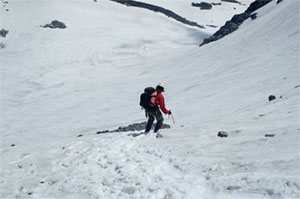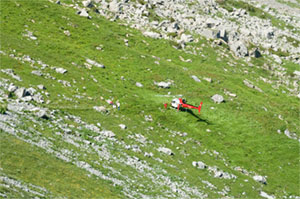Previously on an American Peyote Scribble:
Why post-WWII Germany is not 2007 Iraq
Iraq the Foolishness of Imitating post-WWII Germany
How the US Ignores History and Invites Disaster in Iraq
Now: How the Afghan War is being Repeated in Iraq – and how Iran is the New CIA
First, a question, is the presence of US troops in Iraq:
a) Helping Iraq
b) A good thing for the US
c) Playing into the hands of Iran
Some of the main puzzle pieces of the Middle East include Iraq, Afghanistan, Iran, Israel, Hezbollah, the US, and the CIA.
In 2007, the US is seen as the occupying power in a disorganized county (Iraq) with battling religious and political factions. The US army is fighting the second most advanced guerrilla army ever known (the Iraqi Insurgency).
I say the second because I haven’t heard any reports of the insurgents using laser guided smart weapons to take down US helicopter gunships. The Afghans were able take out the Soviet Hinds with CIA-designed and manufactured shoulder launched missiles and coordinate attacks via satellite communications.
But how is Iran playing the role of the CIA?
Basically, Iran is doing in 2007 to the US (using Iraq) what the US did to Russia (using Afghanistan) during the 1980’s.
If Iran pumps funding, weapons, and training into Hezbollah and the Iraq insurgency, the Cold War between the US and Iran can be waged on the Iraqi battlefield just as the US fought the USSR on the Afghanistan chess board. The Iranian Government can bleed the US without the treat of nuclear retaliation. The US can’t really do anything because currently there are no obvious links that in International Community would believe, which would support overt military action against Iran.
The official reply to such an idea from Iran is that, they want a stable Iraq, therefore, why would they add to instability in Iraq by aiding insurgent operations? It’s true, Iran does want a stable neighbor. But like all countries, Iran wants to be the stronger neighbor. In particular, a neighbor with which Iran fought a decade-long war. Iran wants a politically stable Iraq. But Iran would rather have an unstable disorganized Iraq than an organized, stable neighbor with a US-backed military – they already have one of those in the form of Israel.
The US and Iran have been true political enemies ever since the US-backed Shahs was kicked out by the Iranian revolutionists in the 1979 Revolution. The two countries can’t really engage one another in combat for many of the same reasons that the US didn’t engage the USSR – and that Israel currently can’t invade Iran.
Why mention the connection to Israel vs. Hezbollah? What does that confrontation have to do with the US and Iran?
Iran can fight Israel using Hezbollah. Hezbollah isn’t a country, it’s a political-terror organization. As such, it doesn’t have a central nerve that an army can take out. So, if Iran backs Hezbollah and Hezbollah uses that backing to attack Israel, Israel can’t just go and invade Iran.
The last time Israel launched an offensive against Hezbollah it didn’t result in anything but wasted resources and lives. Hezbollah captured some Israeli soldiers so the Israeli army went in full force. Hezbollah shot rockets into the cities while Israeli munitions pummeled the civilians that Hezbollah hid behind.
Both sides claimed victory. Both sides gained nothing.
It’s a sure thing that nothing is to be gained from an all-out US-Iran war, just as nothing has been gained during the Israeli-Hezbollah confrontations. Iran would no-doubt ultimately loose against the full air and land powers of the US and Israel (who would join the attack), and in the end there’d be a bombed-out Iran which would need to be rebuilt, and another generation of religious warriors would cement their hate for the US and fill the power vacuum after the smoke cleared.
What purpose does such a scenario serve?
So to recap, what’s the ground situation in Iraq now? The official government is backed by the US (not the USSR), battling an insurgency which is probably at least in part funded and organized by Iran (not the CIA).
Does post-WWII Germany have anything to do with 2007 Iraq?
Does the Soviet-Afghan War have some lessons for Iran vs. Israel vs. Hezbollah vs. the US?
See how History works?
What half-baked gutter-headed student of military history sitting in Washington D.C. didn’t see this coming?
Why did the US government allow such a logical progression of events to occur?
Why is the US military in the vulnerable position of trying to govern Iraq?
Why did the US get into this situation? What was the point of the wars in Vietnam, Afghanistan, and Iraq? What would be the point of a US-Iran War?
As I see it, the goal of past and current wars of this type in Vietnam, Afghanistan and the Middle East is not about land control, oil, or the traditional sense of Victory (as in World War II).
The goal (from the US standpoint) is the establishment of stable people-lead governments with ideals of economic prosperity, who make positive contributions to the global existence of humanity.
This sort of sounds like a nice goal. However, War: a tool of destruction, is not capable of building anything – least of all the stable economy of a country. The people have to do that.
Political change must be primarily initiated and established by the people of the country – not by artificial outside influences. No self-respecting Iranian wants a US invasion in the name of democracy. That’s just a fact. No Iranian citizen wants a US occupation of their country. Nothing positive will be gained from a US invasion of Iran.
The US, Vietnam and China are excellent examples. The artificial governments of the US (England), Vietnam (US), and China (Japan), were kicked out by the people of those sovereign nations. Now the US, Vietnam and China are politically and economically stable (more or less) – productive countries contributing to the global stage. In time, both Vietnam and China will most likely transfer to democratic models of governance, just like Iran will – if given time.
We can do better than the current situation in Iraq. We owe it not only to those who have died but to the children of those who will survive and define the course of Iraq and the Middle East in 5, 10, 20, and 50 years from now.

















